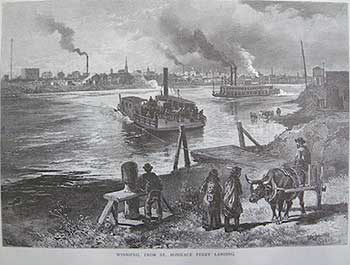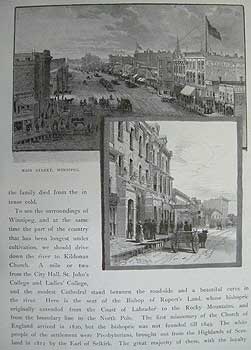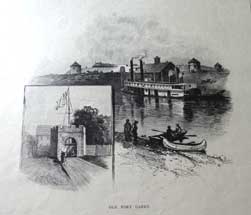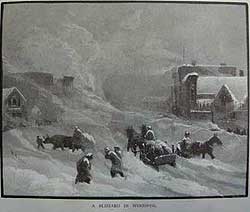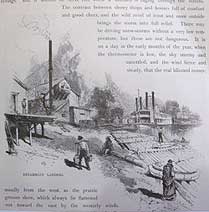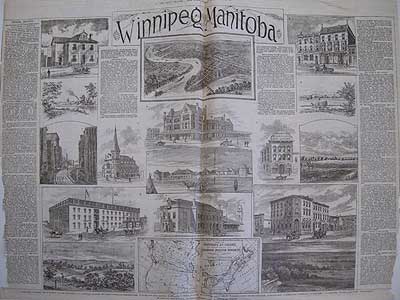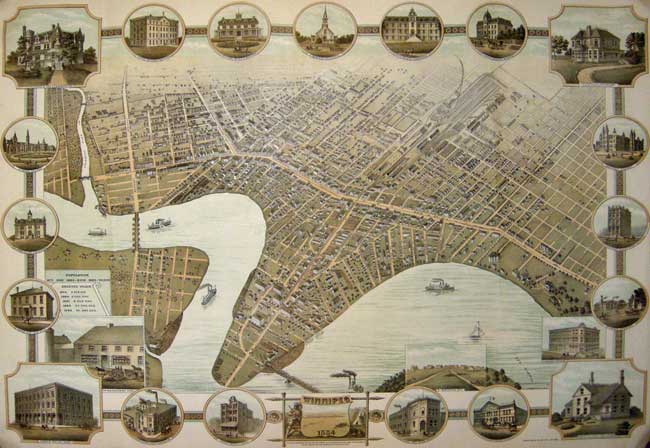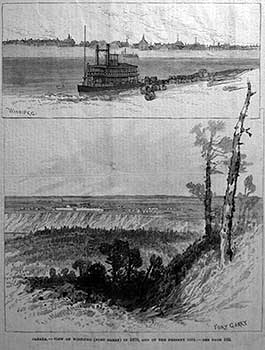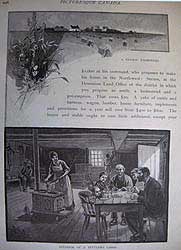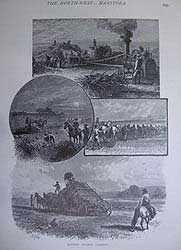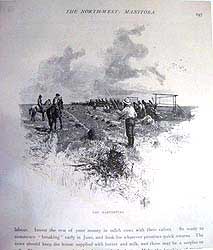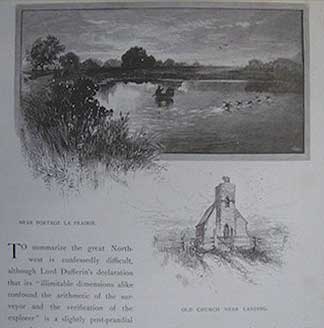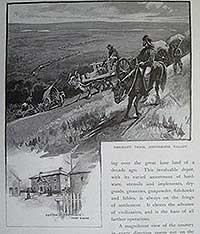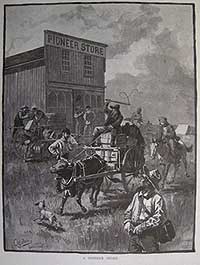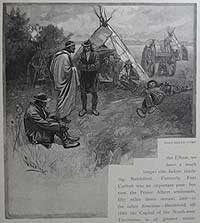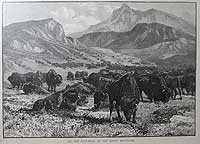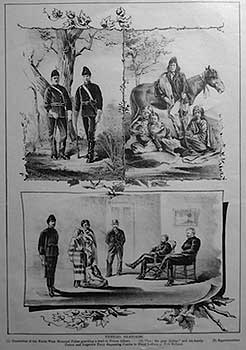North West Territories 1870 -1884… a time of transition
Prior to the early 1870’s, there were virtually no settlements in the North West Territories or Rupert’s Land save for a few scattered missions and H.B.C. posts. (see map item 11) Rather than turn to an agricultural existence in the Red River Settlement, many Métis decided to follow the disappearing buffalo herds into the North West Territory, (see item 10) returning each winter to temporary settlements along the North and South Saskatchewan rivers and in the Qu’Appelle Valley. Following the insurrection in the Red River Settlement, the permanent Métis settlements of St. Albert (1866) and St. Laurent (1871) were founded. By 1873 the latter, named Grandin, had established a successful form of self-government under Gabrielle Dumont.
Development in the Canadian Northwest, while slower than that of the northwestern United States, was achieved without the humiliating spectacle of the Indian wars that have stained the history of U.S. expansionism. This was partly as a result of the respect gained by Indians, half-breeds and whites alike for the peace keeping efforts of N.W.M.P. (see item 12) A job made more difficult for the presence amid the Blackfeet and Cree Indians of Sitting Bull and his Sioux Indians, who had migrated to Canada following the battle of the Little Big Horn (25 June 1876). There they were joined by survivors of Chief Joseph’s Nez Percé War (1879). That peace and good relations were maintained in Canada was due largely to the enlightened presence of Assistant Commissioner Maj. James F. MacLeod and his 150 officers.
White settlement of the Northwest also developed around missions, such as at Prince Albert’s Presbyterian mission (1866); Hudson’s Bay forts, such as Fort Edmonton (1846); Telegraph line stations, such as Battleford, the surveyor’s headquarters and by 1877 the capital of the North West Territories; and N.W.M.P. posts, such as Fort Calgary (1875). Settlement was also stimulated by the rapid growth of the Canadian Pacific Railway towards the west in the 1880’s. The decision to take the southern route resulted in the capital of the North West Territories being transferred to Regina (Originally Oskana ka-asasteki/Pile of bones), in 1883, the site being selected by H.R.H. the Princess Louise, wife of Gov. Gen. The Marquis of Lorne. The year before, the territories had been divided into four provisional districts to facilitate the postal service.
The challenge of opening up the west brought development and prosperity for the white man (see item 9) but spelled disaster for the Indians and near extinction for the buffalo (see item 10). The repeating rifle and pot hunting gave impetus to wholesale slaughter. The resulting disappearance in the early 1880’s of the buffalo meant dependence on charity, in time of need and abject starvation for many Indians, Métis and half breeds. Charity had been officially denied them by the Ottawa government in an effort to persuade them to remain on their reserves.
Treaties confining the free-roaming hunters of the plains to reserves, proved very disagreeable and an infringement of their liberty and ancestral way of life. Factors which readily fomented dissent and gave Louis Riel the following he needed. He answered the call of his people from Montana, where he had been living with his family since 1879, and was escorted to Batoche by Dumont in June 1884.


